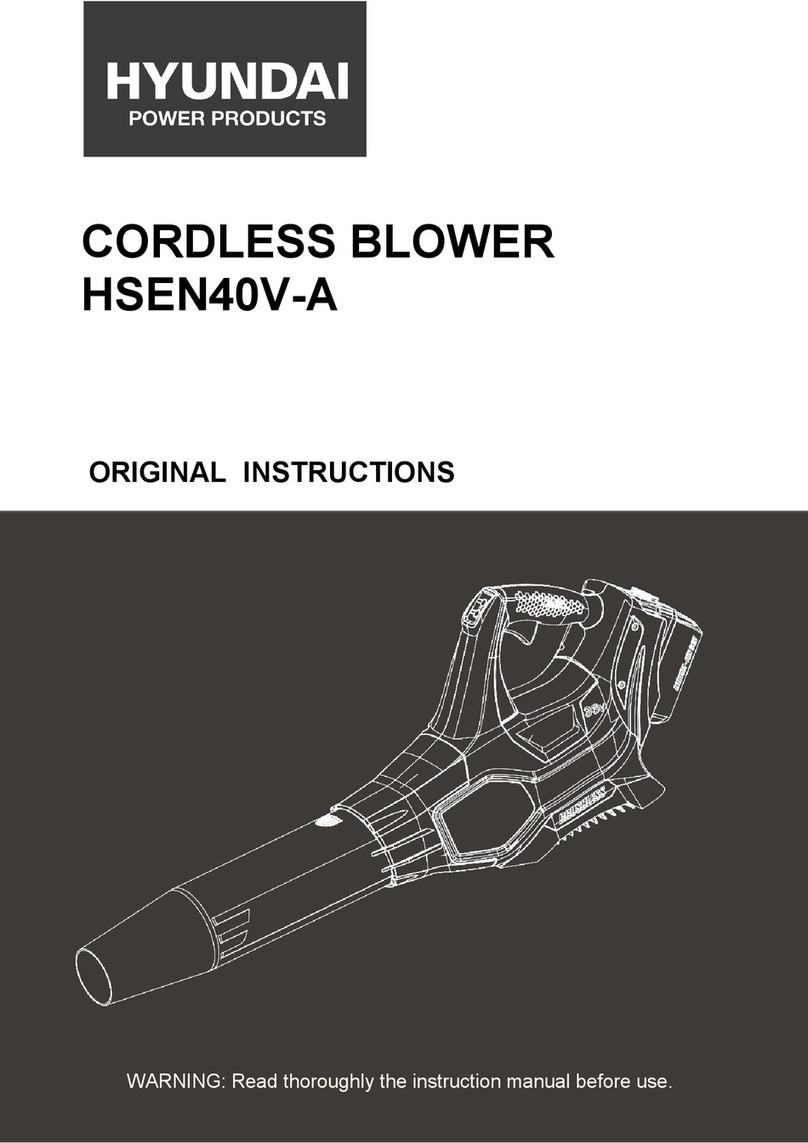Safety Warnings for battery pack
a)
Do not dismantle, open or shred cells or batterypack.
b)
Do not short-circuit a batterypack. Do not store battery packs haphazardly in a box
or drawer where they may short-circuit each other or be short-circuited by
conductive materials. When battery pack is not in use, keep it away from other metal
objects, like paper clips, coins, keys, nails, screws or other small metal objects, that can
make a connection from one terminal to another. Shorting the battery terminals together
may cause burns or a fire.
c)
Do not expose battery pack to heator fire. Avoid storage in direct sunlight.
d)
Do not subject battery pack to mechanical shock.
e)
In the event ofbatteryleaking, do not allow the liquid to come into contact with the
skin or eyes. If contact has been made, wash the affected area with copious
amounts of water and seek medical advice.
f)
Seek medical advice immediately if acell or battery pack has been swallowed.
g)
Keep battery pack clean and dry.
h)
Wipe the battery pack terminals with a clean dry cloth if they becomedirty.
i)
Batterypackneeds to be charged before use. Always refer to this instruction and
use the correct charging procedure.
j)
Do not maintain battery pack on charge when not inuse.
k) After extended periods of storage, it may be necessary to charge and discharge the
battery pack several times to obtain maximum performance.
l)
Battery packgivesits best performance when it is operated at normal room
temperature (20 °C ± 5°C).
m)
When disposing of batterypacks, keep battery packs of different electrochemical
systems separate from each other.
n)
Recharge only with the charger specified byTPT.Do not use any charger other than
that specifically provided for use with the equipment. Acharger that is suitable for one
type of battery pack may create a risk of fire when used with another battery pack.
o)
Do not use any batterypack which is not designed for use with the equipment.
p)
Keep battery pack out of the reach of children.
q)
Retain the original product literature for future reference.
r)
Remove the batteryfrom the equipment when not in use.
s)
Dispose of properly.
Additional safety instructions for your Battery Charger
1. Before charging, read the instructions.
2. Do not charge a leaking battery.
3. Do not use chargers for works other than those for which they are designed.
4. Before charging, ensure your charger is matching the local ACsupply.
5. For indoor use, or do not expose to rain.
6. The charging device must be protected from moisture.
7. Do not use the charging device in the open.
8. Do not short out the contacts of battery or charger.
9. Respect the polarity “+/-“ when charging.
10. Do not open the unit and keep out of the reach of children.
11. Do not charge the batteries of other manufactures or ill-suited models.











































